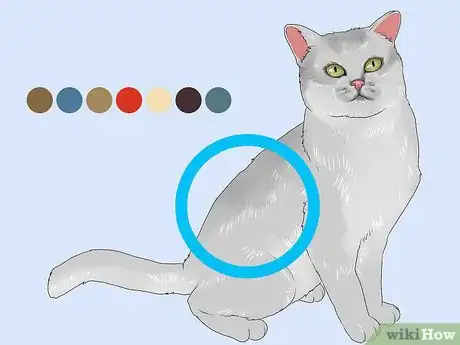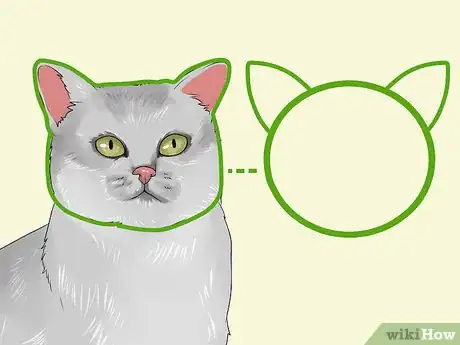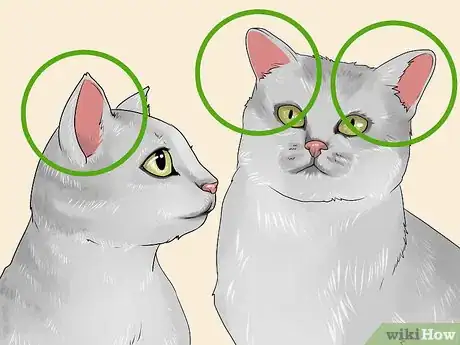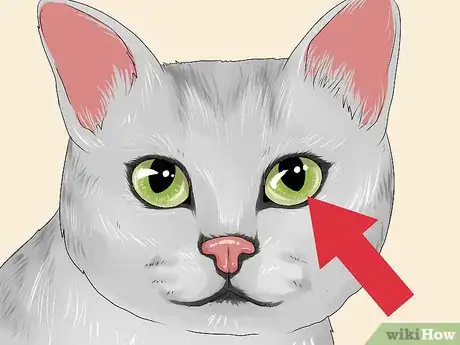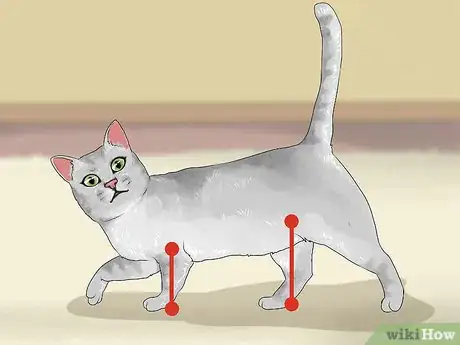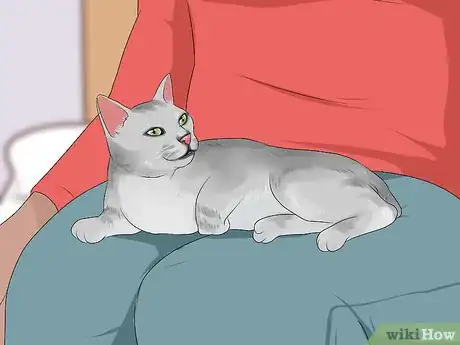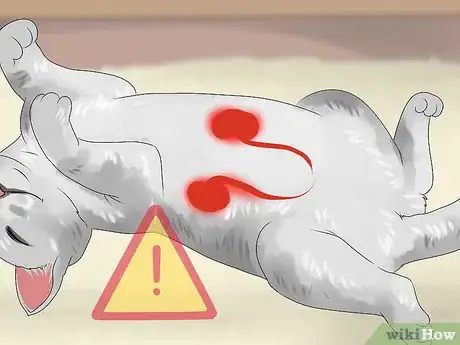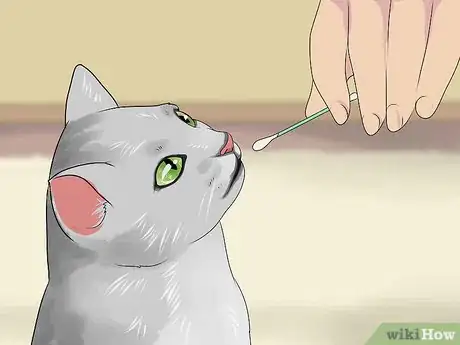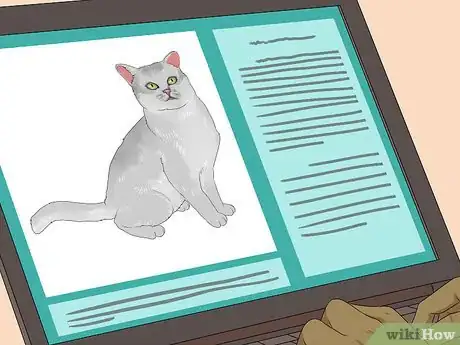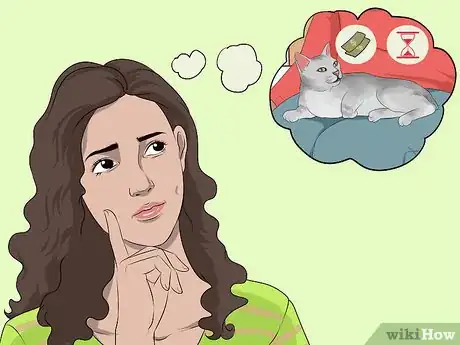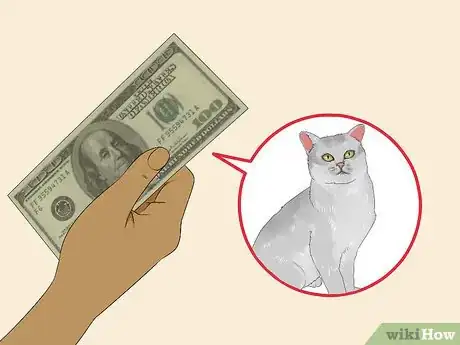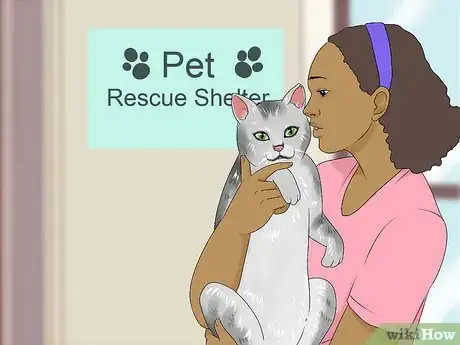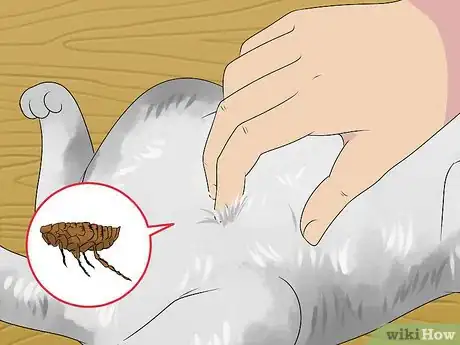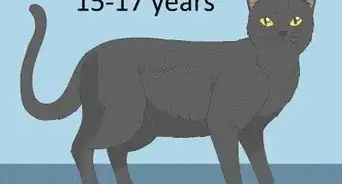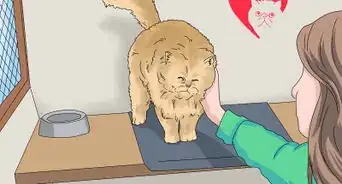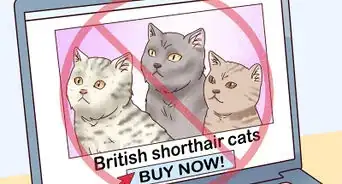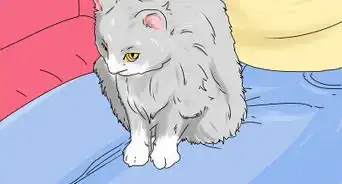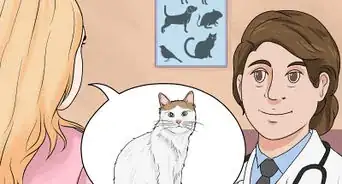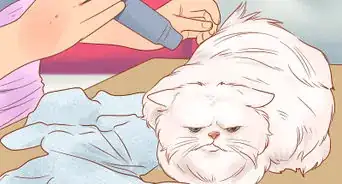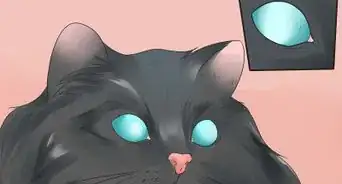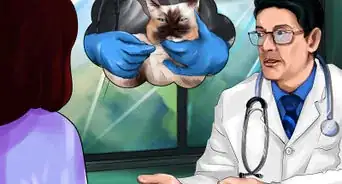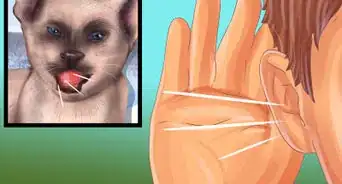This article was co-authored by Pippa Elliott, MRCVS. Dr. Elliott, BVMS, MRCVS is a veterinarian with over 30 years of experience in veterinary surgery and companion animal practice. She graduated from the University of Glasgow in 1987 with a degree in veterinary medicine and surgery. She has worked at the same animal clinic in her hometown for over 20 years.
There are 12 references cited in this article, which can be found at the bottom of the page.
This article has been viewed 15,226 times.
Identifying a Burmilla cat is best done by looking carefully at the cat’s markings and physical features. The cat’s fur, for instance, is thick and dense, and its ears are broad at the base and tilt forward slightly. Certain behaviors – like being affectionate, adventurous, and extroverts – might also tip you off that you’ve got a Burmilla cat on your hands. Alternately, you might take your cat to get a DNA test to confirm with greater accuracy whether the cat is a Burmilla.
Steps
Evaluating Physical Attributes
-
1Check the fur. Burmillas tend to have sparkling silver fur tipped with brown, blue, caramel, red, cream, black, or a tortoiseshell (multicolored or calico) pattern.[1] Shorthaired Burmillas have a silky texture to their fur. The coat will feel thick and dense. Semi-long haired Burmillas tend to have a medium-length coat with tufts at their ears and a fringe of fur on the chest, belly, and legs.[2]
- Burmilla cats will have one of two distinct coat lengths. Some Burmillas are shorthaired, while others have semi-long hair. These are not two different breeds, however. Shorthaired cats can give birth to semi-long haired kittens, and vice versa.
-
2Look at the cat’s head. The heads of Burmilla cats are gently rounded at the top and have a medium width between their ears. The general shape of the face should resemble a sort of wedge, tapering in from wide cheekbones toward the muzzle. The chin will appear firm with good depth, and should be in line with the tip of the nose when viewed in profile.[3]Advertisement
-
3Look at the cat’s ears. Burmilla cats have ears that are medium or large with a broad base. The tips will be somewhat rounded. They should tilt forward slightly, something you can see when viewing the cat from the side. When viewed head-on, the outer line of the ear should appear to lead smoothly into the cat’s cheek.[4]
- Older males might not have ears that lead directly into their cheeks.
-
4Check the forehead. Burmilla cats have a distinctive “M” shape on their foreheads. When examining the cat, look at their forehead for the “M” shape. If present, you might have a Burmilla cat.[5]
-
5Look at the cat’s eyes. Burmilla cats have stunning, luminous eyes. The eyes are green and have a range of different hues. Their eyelids are so dark that some breeders suggest that the cats appear to be wearing eyeliner.[6]
- Younger cats (less than two years old) might have a yellow tinge to their eyes.[7]
-
6Observe the basic contours of the body. Burmilla cats have proportional bodies. The back should be straight from the shoulder to the rump. The chest should be rounded and medium in width. Overall the body is medium in length and size.[8]
- Burmillas are compact but stocky, with heavy bones and substantial musculature.
-
7Check the cat’s limbs. Burmilla cats have slender legs, with rear legs slightly longer than front limbs. Their paws should be ovular. The contours of the paws should be discernible and not covered in tufts of wispy fur.[9]
-
8Weigh the cat. Burmilla cats weigh an average of seven kilograms (15 pounds).[10] However, they might weigh up to 12 pounds and still be healthy. If your cat weighs more than seven kilograms, it might simply be obese. Check your cat’s overall dimensions and proportionality against a known Burmilla to determine if it could simply be an obese Burmilla.[11]
Evaluating Alternative Sources of Evidence
-
1Monitor the cat’s behavior. Burmilla cats have an extroverted streak inherited from their Burmese ancestors. They can also be affectionate in the same way their Persian ancestors were.[12] Some breeders describe the cat as adventurous but clumsy.[13]
- Burmillas might enjoy sitting on your lap.
- Burmillas might be playful even into adulthood.
-
2Monitor your cat’s health. Burmillas are generally healthy. However, they are predisposed to two conditions: polycystic kidney disease and allergies. If your cat has either of these conditions, you might have a Burmilla on your hands.[14]
- Alternately, if you know you have a Burmilla based on other criteria, have your cat screened for these conditions to prevent or attenuate health problems that might arrive later.
-
3Get a DNA test. If you’re still unable to determine whether you have a Burmilla cat based on its behavior and appearance, you could get its genome partially sequenced. The vet will check your cat’s DNA by taking a sample from the inside of its mouth, then checking it against that of a known Burmilla specimen. To have DNA testing performed on your cat, contact your vet.[15]
Obtaining a Burmilla Cat
-
1Research Burmilla cats. Before obtaining a Burmilla cat, you should find out all you can about them. You should be able to recognize Burmilla cats immediately upon seeing one, and should also know what sort of care the cat needs. Consult veterinary literature, encyclopedia entries, and other trustworthy sources to learn more about Burmilla cats.[16]
-
2Decide what kind of cat experience you want. Obtaining a cat of any sort is a serious investment of both time and money. Once you’ve researched Burmilla cats thoroughly, evaluate your situation to determine if it is the right cat for you based on its temperament and attention requirements. If you conclude that it is right for you, decide if you’d like to raise a kitten or if you’d prefer the company of a full-grown cat.[17]
- While it might be more difficult to obtain a full-grown cat, it is not impossible.
-
3Buy from a reputable breeder. You can locate a reputable breeder by soliciting recommendations from vets, family members, or other trusted members of your community. You can identify a reputable breeder by certain practices they engage in. For instance, a reputable breeder will not sell to wholesalers or pet stores. If the breeder sells cats online, you should also steer clear.[18]
- Breeders of repute should provide all shots and vaccines necessary during the cat’s first weeks of life, and have the cat screened for illnesses before selling it. If your breeder doesn’t provide medical documentation that demonstrates the cat is free of illness and has receive its requisite vaccinations, look elsewhere for a Burmilla cat.
- Breeders should also be able to supply pedigree papers for the cat's parents. This will show you the cat's lineage, so that you can check to see if the kitten is purebred Burmilla.
- Ask your breeder questions. A reputable breeder should be able to answer any questions you might have. You might want to ask, for instance, “Is this cat energetic?” or “How old is this cat?” Questions regarding whether or not the cat is litterbox trained and whether it is friendly are also appropriate.
-
4Adopt from a rescue shelter. Because Burmilla cats are a relatively uncommon breed, it is unlikely you’ll obtain one from a pet shelter or a private seller. But if you do, hold them to the same standards you would a breeder. Contact your local animal shelter or animal rescue organization for information regarding whether they have Burmillas available for adoption.
-
5Check the conditions in which the cat is kept. When you meet the breeder you’re working with, check the premises. Is the cat kept outside where it could contract fleas or interact with sick cats? Is it kept crammed in a tiny pen with a bunch of other cats (or even alone)? Does it have bald spots on its fur, wounds, or other signs of ill health? These are all red flags that you should look elsewhere for a Burmilla cat.[19]
- Good breeders will raise their cats indoors and allow them plenty of opportunities for socialization and play.
- If the breeder you’re working with refuses to allow you to see where the cat is being raised, you should be suspicious. This is usually a sign that the breeder is trying to hide something.
-
6Be patient. When working with a reputable breeder, you will likely not be able to get a Burmilla immediately. Even if one was born recently, they need to stay with their mother to nurse for about 12 to 16 weeks. Plus, as reputable breeders are much in demand, you may get your name on a wait list, which could further delay your Burmilla experience.[20]
- If the breeder you’re working with offers you a Burmilla and any other sort of cat you request right away, you should be suspicious about their business practices.
References
- ↑ http://www.vetstreet.com/cats/Burmilla
- ↑ http://www.vetstreet.com/cats/burmilla#grooming
- ↑ http://cfa.org/Portals/0/documents/breeds/standards/burmilla.pdf
- ↑ http://cfa.org/Portals/0/documents/breeds/standards/burmilla.pdf
- ↑ http://www.catsofaustralia.com/burmilla-cat-description.htm
- ↑ http://www.catsofaustralia.com/burmilla-cat-description.htm
- ↑ http://cfa.org/Portals/0/documents/breeds/standards/burmilla.pdf
- ↑ http://cfa.org/Portals/0/documents/breeds/standards/burmilla.pdf
- ↑ http://cfa.org/Portals/0/documents/breeds/standards/burmilla.pdf
- ↑ https://www.purina.com.au/cats/breeds/burmilla
- ↑ https://www.purina.com.au/cats/breeds/burmilla
- ↑ http://www.breedlist.com/burmilla-breeders.html
- ↑ http://cattime.com/cat-breeds/burmilla-cats#/slide/1
- ↑ http://www.vetstreet.com/cats/burmilla#health
- ↑ https://www.vgl.ucdavis.edu/services/cat/ancestry/faq.php#1
- ↑ http://www.vetstreet.com/cats/burmilla#finding
- ↑ http://www.vetstreet.com/cats/burmilla#finding
- ↑ http://www.vetstreet.com/cats/burmilla#finding
- ↑ http://www.vetstreet.com/cats/burmilla#finding
- ↑ http://www.vetstreet.com/cats/burmilla#finding
About This Article
To identify a Burmilla cat, first check for a distinctive fur texture and color. Most Burmillas have fur that is either short and silky or medium-length with tufts at the ears and longer fur on the chest and belly. Their fur is usually silver, but can be tipped with other colors, such as brown, caramel, cream, black, or tortoiseshell. They should also have a distinctive M-shaped marking on the forehead. Check for big, bright eyes with dark lids that make it look like the cat is wearing eyeliner. You can also spot identifying characteristics in the cat’s face and body shape. For example, they have wide cheekbones and medium to large ears that have wide bases and are tilted slightly forward. Look for a stocky body and slender legs, too. Keep scrolling for more tips from our Veterinarian co-author, including how to identify a Burmilla based on its behavior.
